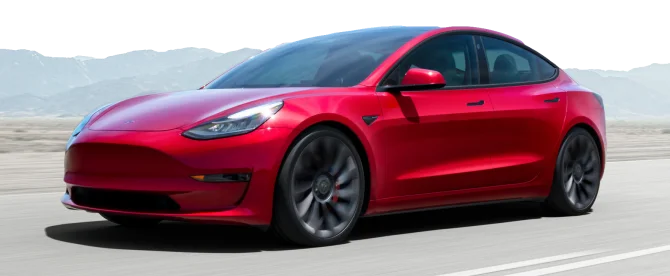¡Consigue esta oferta! Llama ahora.
Hable con un especialista en planes de protección de vehículos y obtenga $300 apagado cualquier nuevo contrato al instante.
Llamar 866-678-4172
o escanea el código a continuación


Los propietarios de automóviles tienen muchas cosas en mente. Desde la conducción segura fundamental hasta... Realizar un seguimiento del mantenimiento y las reparacionesHay mucho en qué centrarse. Un sistema crítico que suele pasarse por alto son las puertas. Piénsalo un momento. ¿Cuándo fue la última vez que revisaste los sellos, los pestillos y la alineación de la puerta de tu auto? Probablemente nunca.
Sin embargo, las puertas de un vehículo cumplen una función importante. Protegen a los ocupantes y al interior de los elementos, ofrecen una barrera en caso de colisión y mantienen la cabina segura. Sin embargo, estas protecciones pueden desaparecer si hay una avería o un componente defectuoso. Entendiendo qué hace una garantía y no cubre cuando se trata de puertas, puede ahorrarle dolores de cabeza y facturas de reparación inesperadas en el futuro.
Continúe leyendo mientras exploramos la cobertura de la puerta bajo una garantía de fábrica y una garantía extendida, que a veces se denomina plan de protección automática o contrato de servicio de vehiculoAprenderá sobre los problemas comunes de las puertas y cuáles están cubiertos por la garantía. Además, esta es una oportunidad para familiarizarse con los términos y la terminología de la garantía, para que esté preparado si necesita reparaciones de puertas en el futuro. Por último, repasaremos consejos para mantener las puertas de su auto en óptimas condiciones, lo que evita tener que realizar reparaciones.
Una ventaja de comprar un auto nuevo es que incluye la garantía del fabricante, también conocida como garantía de fábrica. En pocas palabras, es la promesa de que el fabricante reparará o reemplazará cualquier componente defectuoso del vehículo nuevo. Normalmente, esto ocurre si hay un defecto de materiales o mano de obra. La garantía del fabricante tiene una duración específica o un límite de kilometraje, generalmente de tres a cinco años o de 36,000 a 50,000 millas, lo que ocurra primero.
¿Qué significa esto para las puertas de su coche? Generalmente, la garantía de fábrica se aplica si el problema se debe a un defecto de fabricación. Algunos ejemplos incluyen:
Es importante entender que la garantía del fabricante no aplica si el problema se debe a un accidente, mal uso, negligencia o desgaste normal. Si la puerta de su auto se daña en un pequeño choque o si ha dejado que se acumule óxido en una bisagra o pestillo, las reparaciones son su responsabilidad.
Recuerde que la cobertura de fábrica tiene límites de tiempo y kilometraje. Por eso es fundamental detectar los problemas con las puertas a tiempo. De lo contrario, los problemas con las puertas después de la garantía serán su problema.
Como se mencionó, las garantías de fábrica no son indefinidas, por lo que innumerables propietarios de automóviles recurren a garantías extendidas para mayor tranquilidad. Esta protección posventa entra en vigencia cuando vence la cobertura del fabricante.
Empresas como Endurance Ofrecemos una gama de garantías extendidas para autos o planes de protección automotriz. Según el plan, puede incluir protección para componentes de puertas y problemas relacionados.
Por ejemplo, El plan Supremo de Endurance tiene cobertura excluyente, lo que significa que, a menos que un componente esté expresamente excluido, está protegido según los términos de cobertura general. En el caso de las puertas, solo los bujes, cojinetes y manijas están exentos. Un plan de exclusión es similar a un plan de fábrica. garantía de parachoques a parachoques.
Otras opciones de Endurance se conocen como planes de cobertura establecida, que especifican con precisión qué está protegido. Supreme y Endurance Planes Advantage se encuentran entre los programas que cubren los motores de las ventanas eléctricas y los actuadores de las cerraduras eléctricas de las puertas, componentes esenciales para el correcto funcionamiento de las puertas.
Garantías extendidas Endurance Destacan porque a menudo superan la cobertura del fabricante. Todos los clientes de Endurance reciben asistencia 24/7. asistencia en carretera, que incluye remolque, arranque forzado y servicio de cerrajería. Por otro lado, Toyota solo ofrece asistencia en carretera durante dos años, a pesar de que su garantía dura tres años (o 36,000 millas). Endurance También incluye protección contra interrupción de viaje y soporte para alquiler de vehículos.
Los propietarios de vehículos que se suscriben al plan de protección de vehículos Advantage reciben hasta $1,500 en servicios de mantenimiento cubiertos, como cambios de aceite y rotación de neumáticos. La mayoría de los fabricantes de automóviles tradicionales no incluyen este tipo de servicios en sus garantías.
Endurance También incluye un año gratis de Beneficios de élite Con un valor de hasta $2,000. Los titulares del plan pagan una pequeña tarifa de activación para acceder a servicios de reparación y reemplazo de neumáticos, reemplazo de llavero, descuentos en reparación de colisiones y protección contra pérdida total.
Después de analizar el panorama general de los problemas de las puertas y las garantías, revisemos algunos ejemplos específicos de cómo se resuelven los problemas de las puertas a través de diferentes tipos de cobertura.
Uno de los ejemplos más infames es el del Honda Odyssey. Sus problemáticas puertas correderas eléctricas datan de hace más de veinte años.El problema se debe a un mal funcionamiento de los mecanismos de las puertas, lo que provoca que se atasquen o no se cierren correctamente. A veces, las puertas fallan al abrirse y cerrarse automáticamente. Más recientemente, Honda emitió un retiro del mercado para los modelos Odyssey 2018 y 2019De nuevo, se trataba de puertas correderas problemáticas. En este caso, sin embargo, el problema era que las puertas se abrían accidentalmente.
Los propietarios de Odyssey con puertas laterales defectuosas siempre deben verificar si un retiro del mercado cubre sus vehículos. Un concesionario Honda también puede consultar los boletines de servicio técnico (TSB) relacionados con las puertas laterales. Los TSB son avisos emitidos por el fabricante que informan a los departamentos de servicio del concesionario sobre problemas específicos del modelo. A menudo, la solución incluye reparaciones gratuitas.
Las garantías también pueden ser relevantes. Una garantía de fábrica vigente o una garantía extendida aplicable cubriría estos problemas con la puerta Odyssey. Por ejemplo, una garantía extendida con cobertura excluyente Es probable que ayude.
Otro ejemplo notorio de Los problemas con las puertas afectan a los Ford Escape de 2020 y 2021Según un Investigación de la Administración Nacional de Seguridad del Tráfico en las Carreteras (NHTSA)Más de 500,000 unidades son susceptibles a soldaduras defectuosas, lo que provoca que las puertas Escape hagan ruido o se abran repentinamente al conducir. Si bien la compañía no emitió un retiro del mercado, se comprometió a reparar el problema sin costo alguno para todos los propietarios afectados. Este es otro caso en el que el fabricante cubre la reparación de las puertas, aunque este no está cubierto por la garantía ni el retiro del mercado.
Los motores de los elevalunas eléctricos son propensos a fallas, especialmente en autos antiguos. Este componente sube y baja la ventanilla, por lo que una falla la dejará atascada en posición abierta o cerrada. Un interruptor defectuoso también puede ser la causa. Además de la garantía de fábrica, una garantía extendida con cobertura ampliada de componentes eléctricos o una cobertura excluyente (como la Endurance Supreme) sería útil en esta situación.
Cada reparación, incluyendo las que involucran puertas de autos, es única. En definitiva, la elegibilidad para la protección de la garantía (de fábrica o extendida) depende de la causa del problema y de los términos de la cobertura de la garantía. La cobertura puede verse afectada por:
Para determinar si las reparaciones de las puertas del coche están cubiertas por una garantía extendida, es necesario revisar la documentación. Lo ideal es hacerlo antes de contratar la cobertura para evitar sorpresas posteriores.
Revisar una contrato de muestra y haga preguntas al representante de la compañía de garantía. Concéntrese en la sección que detalla qué está cubierto o excluido. Si bien un plan excluyente como Endurance Supreme cubre la mayoría de los sistemas principales, existen algunas exenciones.
Algunas exclusiones de puertas incluyen "chapa y paneles de carrocería" y "vidrio". Esto tiene sentido, ya que estas piezas no son mecánicas. Cualquier problema con ellas probablemente se deba a una fuerza externa (un accidente o vandalismo, por ejemplo), más que a un defecto de fabricación.
Incluso si ya cuenta con una garantía extendida, nunca está de más informarse sobre la protección disponible en caso de problemas con la puerta. Lea el contrato para determinar con precisión qué reparaciones de la puerta están cubiertas. Si tiene dudas, comuníquese con la compañía de garantía. Este también es un excelente momento para confirmar si la cobertura de la garantía está sujeta a seguir el programa de mantenimiento del fabricante.
A continuación se muestran algunos escenarios que demuestran cómo funciona la cobertura de puertas en el mundo real.
El cierre eléctrico de la puerta del copiloto de un sedán de dos años, aún en garantía, dejó de funcionar repentinamente. Una visita al concesionario revela un actuador defectuoso, el componente que controla el bloqueo y desbloqueo de las puertas mediante un interruptor. Gracias a la garantía del fabricante, no hay factura de reparación. Solo se te acaba el tiempo.
La ventanilla del conductor de una SUV de nueve años está atascada en la posición cerrada. Aunque el propietario tiene una garantía extendida, no está seguro de si esta reparación es válida. Una revisión del contrato muestra que el motor y el interruptor de la ventanilla eléctrica, la probable causa del problema, están cubiertos. El propietario lleva el coche a un taller autorizado donde se reemplaza el motor de la ventanilla averiado. Al ser una garantía sin deducible, el propietario no tiene que pagar ninguna reparación. De lo contrario, se aplicaría el deducible correspondiente.
El propietario de un hatchback de 12 años con garantía extendida observa que la puerta trasera del conductor está desalineada al cerrarse y le cuesta abrirla. Lleva el coche al mismo taller que se encarga de otros trabajos cubiertos por la garantía. Una inspección descubre una bisagra de la puerta deteriorada debido a una corrosión considerable. En este caso, la garantía no cubre la reparación porque el problema se debe a negligencia, no a un defecto de fabricación.
Lidiar con problemas en las puertas o cualquier otro problema del coche es, en el mejor de los casos, una molestia y, en el peor, un gasto. Sin embargo, algunas medidas proactivas pueden reducir la probabilidad de tener que presentar una reclamación de garantía extendida y prepararlo mejor para cuando sea necesario.
Como mínimo, dedique unos minutos cada tres meses a revisar su puerta por dentro y por fuera. Busque daños, corrosión, piezas sueltas y paneles desalineados. Inspeccione que los sellos estén en buen estado. Compruebe que todas las cerraduras, pestillos, manijas y ventanas funcionen correctamente. Esto es igualmente importante para las puertas que no se usan con frecuencia.
No ignore ningún problema detectado durante una inspección o al conducir con regularidad. Un pequeño problema, como una ventanilla eléctrica lenta o un cierre defectuoso, puede convertirse rápidamente en una reparación importante y más costosa. Además, las ventanillas atascadas suelen ocurrir cuando el clima no es favorable.
La mayoría de las garantías de fábrica y extendidas exigen que los vehículos cubiertos reciban un mantenimiento adecuado. De lo contrario, la cobertura puede quedar anulada. Si bien la mayoría de los propietarios de automóviles conocen los requisitos para los cambios de aceite, la rotación de neumáticos y la revisión de fluidos, las puertas también requieren atención. Como mínimo, las bisagras y los pestillos deben lubricarse periódicamente, y las juntas deben tratarse con silicona para preservar su flexibilidad. Consulte el manual del propietario del vehículo o contacte a un concesionario para confirmar los requisitos.
Cada compañía de garantía extendida tiene un proceso específico para presentar una reclamación. Conocer estos detalles con antelación puede agilizar el proceso y las reparaciones. No seguir los pasos correctos puede provocar retrasos o el rechazo de la reclamación.
Guarde los documentos de garantía y los registros de servicio de su vehículo en un lugar seguro. Esto facilita el seguimiento del servicio y el historial de reclamaciones. Además, no hay que adivinar si ya se ha reparado algo.
Las piezas cubiertas varían según el fabricante, el plan de garantía del auto y la situación. Normalmente, los artículos sujetos a desgaste, como pastillas de freno, neumáticos, limpiaparabrisas y bombillas, no están cubiertos. Además, las garantías extendidas suelen no cubrir daños estéticos, molduras interiores y exteriores, ni equipos de posventa.
Si la manija de la puerta se rompe debido a un defecto de fabricación o una falla mecánica, debería estar cubierta por una garantía de fábrica vigente. Una garantía extendida puede o no cubrir una manija rota. Su aseguradora podría cubrir este tipo de situación. Consulte su contrato de garantía para obtener más detalles.
Una garantía de fábrica suele cubrir los componentes de la cerradura de la puerta. Lo mismo puede aplicarse a una garantía extendida que ofrece cobertura exclusiva o cubre específicamente piezas como el actuador o el interruptor de la cerradura eléctrica de la puerta.
Los sellos y juntas de las puertas generalmente se consideran elementos sujetos a desgaste, por lo que no están protegidos por una garantía de fábrica o extendida.
Un Garantía del vehículo Endurance, más precisamente llamado contrato de servicio del vehículo, puede proteger su auto nuevo o usado contra averías y facturas de reparación inesperadas. Conozca todas sus opciones de cobertura solicitando un Cotización Gratis o visitar el Tienda online Endurance Para obtener información instantánea sobre precios y planes, también puede llamar (800) 253-8203 para hablar con un asesor del plan Endurance.
Verificar Nuestro blog para artículos detallados sobre reparaciones de automóviles, consejos de mantenimiento, información sobre garantías, reseñas de automóviles y más.

Estamos aquí para asegurarnos de que obtenga la protección EV más completa. Por eso nos hemos asociado con Xcelerate automático para ofrecerle una cobertura Tesla transparente y confiable.
¿Quiere que nos comuniquemos con usted acerca de la cobertura XCare para su Tesla?



¡Llama y obtén un descuento de $300 en cualquier plan nuevo!
Al hacer clic en el botón, acepta que Endurance utilice tecnología automatizada para llamarlo, enviarle un correo electrónico y enviarle mensajes de texto utilizando la información de contacto anterior, incluido su número de teléfono móvil, si se proporciona, con respecto a la protección del automóvil o, en California, el seguro contra averías mecánicas. También acepta el Endurance política de privacidad y Términos y condiciones. El consentimiento no es una condición de compra y puede retirar el consentimiento en cualquier momento. Se pueden aplicar tarifas por mensajes y datos.
Hable con un especialista en planes de protección de vehículos y obtenga $300 apagado cualquier nuevo contrato al instante.
Llamar 866-678-4172
o escanea el código a continuación



Simplemente complete la información a continuación y le daremos seguimiento rápidamente con su cotización gratuita y sin compromiso.
Al hacer clic en el botón, acepta que Endurance utilice tecnología automatizada para llamarlo, enviarle un correo electrónico y enviarle mensajes de texto utilizando la información de contacto anterior, incluido su número de teléfono móvil, si se proporciona, con respecto a la protección del automóvil o, en California, el seguro contra averías mecánicas. También acepta el Endurance política de privacidad y Términos y condiciones. El consentimiento no es una condición de compra y puede retirar el consentimiento en cualquier momento. Se pueden aplicar tarifas por mensajes y datos.

Para hablar con un especialista en planes de protección de vehículos y guardar $300
Escanee el código a continuación
Dave es un periodista especializado en automoción que combina una profunda pasión por los coches, experiencia práctica en mecánica y conocimiento de los concesionarios. Su trabajo se centra principalmente en consejos para consumidores y artículos para aficionados al automovilismo. Colaborador habitual de SlashGear.com y otras plataformas líderes en automoción, Dave se licenció en Periodismo en la Universidad George Washington.